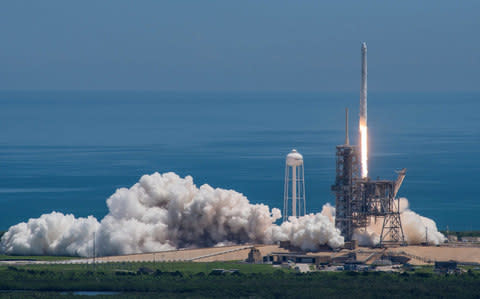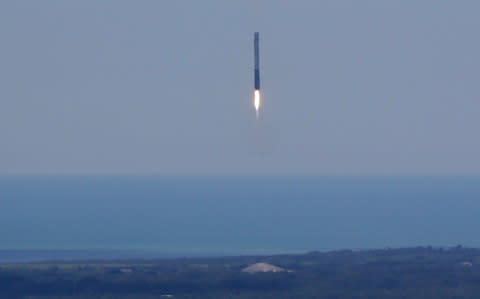SpaceX successfully delivers 20 mice to the International Space Station

A SpaceX capsule rocketed to the International Space Station from the Kennedy Space Centre in Florida on Monday, carrying tons of science experiments, plus ice cream.
As has become customary on these cargo flights, SpaceX landed its leftover booster back at Cape Canaveral shortly after lift-off, a key to its long-term effort to recycle rockets and reduce costs.
It was the 14th successful booster landing for SpaceX and the sixth on the giant X at the company's designated touchdown spot at Cape Canaveral Air Force Station, just a few miles from its NASA-leased launch pad at Kennedy Space Centre.

Experiments make up most of the 6,400 pounds (2900 kg) of cargo, which should reach the orbiting lab Wednesday. That includes 20 mice that will return alive inside the SpaceX Dragon capsule in about a month.
The Dragon is also doubling as an ice cream truck this time.
There was extra freezer space, so NASA packed little cups of vanilla, chocolate and birthday cake ice cream, as well as ice cream candy bars.

The mice are part of a study aimed at better understanding visual problems suffered in space by some male astronauts.
Scientists will study the pressure in the animals' eyes, as well as the movement of fluid in their brains. Thirty days for mice in space is comparable to three years for humans, according to Florida State University Michael Delp, who's in charge of the experiment.
The investigation may help explain why female astronauts don't have this vision problem, which can linger long after space flight, he added.
Also going up on behalf of the Michael J. Fox Foundation: protein crystals that, in space, might shed light on Parkinson's disease. This is the 13th delivery by SpaceX , one of two private shippers hired by NASA.
